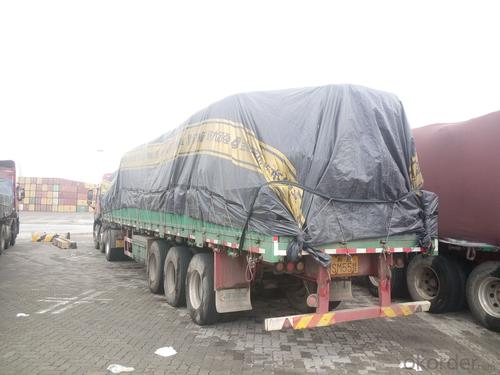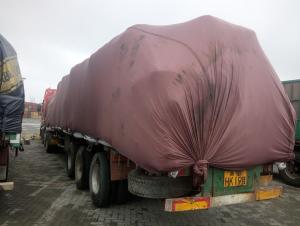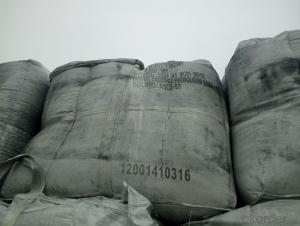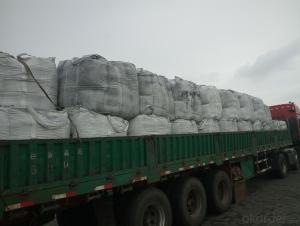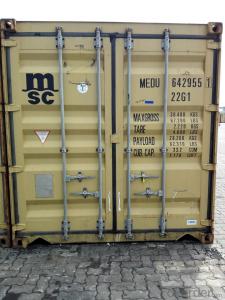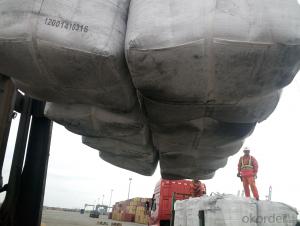Calcined Pitch Coke with Ash 0.5%max for Steel Mills
- Loading Port:
- Tianjin
- Payment Terms:
- TT OR LC
- Min Order Qty:
- 29 m.t.
- Supply Capability:
- 8000 m.t./month
OKorder Service Pledge
OKorder Financial Service
You Might Also Like
Introduction
Pitch Coke/Coal Tar Pitch is a kind of black brittleness and blocky piece, lustrously at normal temperature. It has special odour and poisonous and can be easily flame when melting, second-grade inflammable solid.
Pitch Coke/Coal Tar Pitch is obtained from powerfully processed coal tar. Compared to petroleum asphalt, the adhesiveness is better. Coal Tar Pitch is high quality tar production with high fixed carbon. It has excellent adhesion, waterproofing and resistance against seawater, oil and various chemicals. In these properties, it is much better than petroleum asphalt tar.
It can be used to produce painting, electrode, pitch coke, and tar felt. It also can be used as fuel and the raw material of asphalt carbon black.
Features:
The morphology, chemistry and crystallinity of recarburisers have a major impact on the overall casting cost. The combined application and cost benefits, which are derived through the use of Desulco, enable foundries to manufacture castings in a highly cost effective manner.
reduces
Recarburiser consumption
Power consumption
Inoculant consumption
MgFeSi consumption
Furnace refractory wear
Scrap rate
Tap to tap time
Slag inclusions risk
Chill
increases
Casting microstructure
Productivity
Process consistency
Carbon Recovery
Compared with calcined petroleum coke, acetylene coke and
graphite electrode scrap, Desulco yields the highest carbon
recovery and fastest dissolution time
Specifications:
CPC | |||
F.C.% | 98.5MIN | 98.5MIN | 98MIN |
ASH % | 0.8MAX | 0.8MAX | 1MAX |
V.M.% | 0.7 MAX | 0.7 MAX | 1 MAX |
SULFUR % | 0. 5MAX | 0. 7MAX | 1MAX |
MOISTURE % | 0.5MAX | 0.5MAX | 1MAX |
Pictures:
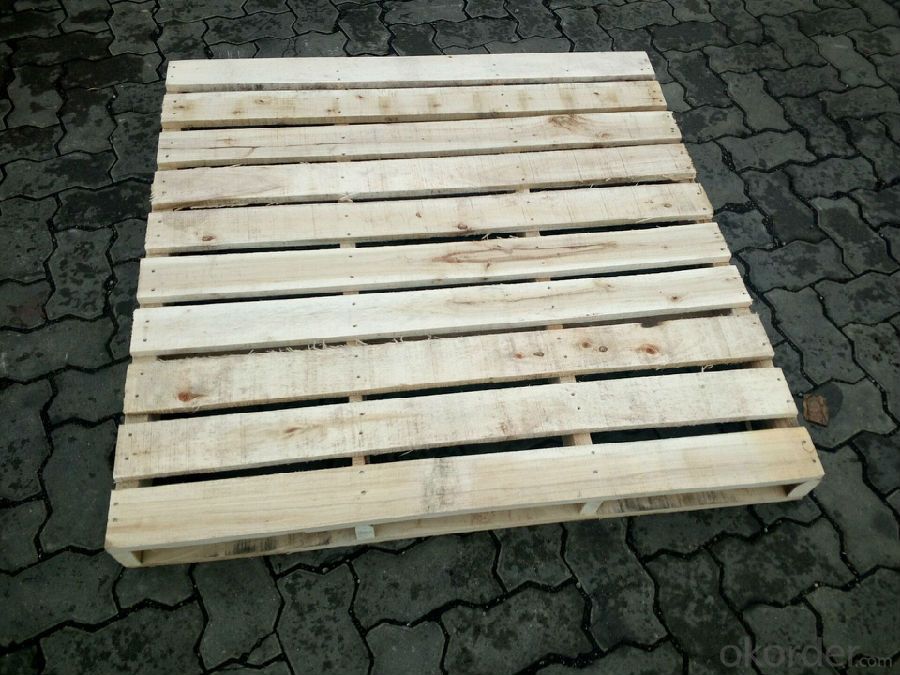
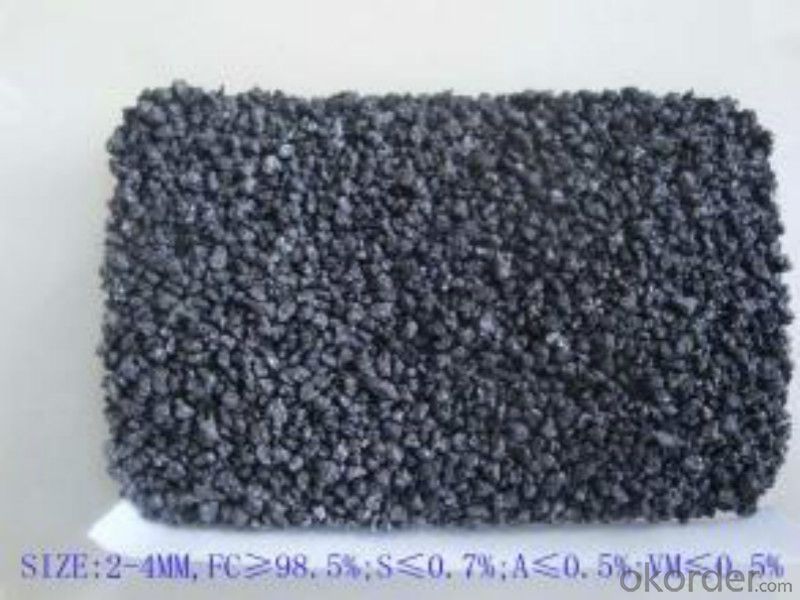

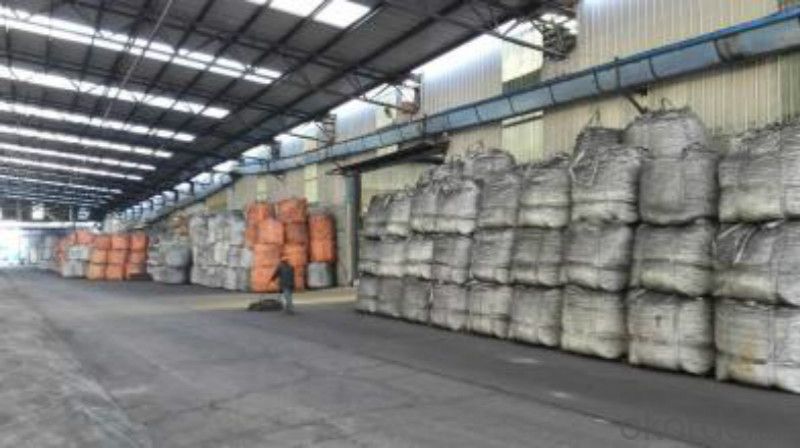
FAQ:
1.MOQ:2 Containers |
2.Size:1-3mm,1-5mm,2-6mm,3-5mm and as the customer's requirement |
3.Packing: 1 ton jumbo bag or 25kgs paper in bag |
4.Payment:T/T or L/C at sight |
5.Delivery time: within 15 days after receiving the deposit |
6.Usage: it is as carbon raiser,widely used in steelmaking,casting,casting iron,steel foundry,aluminum metallury. |
- Q: Will long-term use of carbon alloy chopsticks cause cancer?
- Do chopsticks also cause cancer? Experts say, should not use too long, 3 to 6 months that change, pay attention to chopsticks material selection, use and maintenance. Have you noticed how often the chopsticks are changed at home? Recently, a news about the need for regular replacement of chopsticks, attracted the attention of Internet users. According to reports, hidden in the small groove in the chopsticks bacteria, may cause dysentery, gastroenteritis and other diseases, it is recommended that the public, chopsticks should be replaced at regular intervals of 3~6 months. This makes many people surprised, "used so many years chopsticks, do not know!"." Yesterday morning, in the south near Xi'an Renrenle supermarket shopping public Ms. Hao said. Subsequently, a random survey of 20 members of the public, of which 4 people said that in the six months of internal moving or kitchen renovation and replaced chopsticks. While the other 16 citizens, the number of chopsticks used in the home was 1~3 years. Especially for families with old people, chopsticks are updated more slowly. "The old man can't bear to throw it. He can't help it. Every time he comes to the restaurant, the chopsticks are not enough."." Liu said the public. In this regard, yesterday, director of the Xi'an Municipal Hospital of traditional Chinese Medicine Department of Gastroenterology physician Huang Yahui said, if the wood and bamboo chopsticks used for a long time, it is easy to breed bacteria sawdust loose.
- Q: What's a carbon cloth to do as a fish pole?
- This is difficult, usually with a lathe like tool, by heating in the brush, layer by layer roll up, and finally cut off paint, baking
- Q: How is carbon used in the production of adhesives?
- Adhesives make use of carbon in various ways during production. One way is by utilizing carbon black, a fine powder created from the incomplete combustion of hydrocarbon fuels. Adding carbon black to adhesives improves their strength, durability, and resistance to UV radiation. It acts as a reinforcing agent, enhancing the adhesive's adhesion and cohesion properties. Furthermore, adhesives sometimes incorporate carbon fibers to further enhance their strength and mechanical properties. These fibers are produced by heating and stretching synthetic fibers or natural materials like rayon or petroleum pitch. Including carbon fibers in adhesives increases their tensile strength and stiffness, making them ideal for high-performance applications. Additionally, carbon-based polymers like epoxies and polyesters find wide use in adhesive formulations. These polymers are created through chemical reactions involving carbon-based monomers. They offer excellent bonding properties, high resistance to heat and chemicals, and can be customized to meet specific application requirements. Moreover, carbon-based resins can be modified with other additives and fillers to achieve specific characteristics, such as flexibility, impact resistance, or flame retardancy. In conclusion, adhesives benefit from the incorporation of carbon black, carbon fibers, and carbon-based polymers. These materials significantly enhance the strength, durability, and other properties of adhesives, making them suitable for a wide range of applications in industries such as automotive, construction, electronics, and aerospace.
- Q: What are the different types of carbon-based drugs?
- There are several categories in which carbon-based drugs can be classified, based on their chemical structure and mode of action. One of the most common categories is alkaloids, which are naturally occurring compounds found in plants and have powerful pharmacological effects. Examples of carbon-based alkaloid drugs include morphine, codeine, and cocaine. Another category of carbon-based drugs is steroids. Steroids are compounds characterized by a carbon skeleton consisting of four fused rings. They are widely used in medicine because of their anti-inflammatory and immunosuppressive properties. Examples of carbon-based steroid drugs include cortisone, prednisone, and estrogen. Additionally, carbon-based drugs can be classified as nonsteroidal anti-inflammatory drugs (NSAIDs). These drugs work by inhibiting the action of cyclooxygenase enzymes, which reduces pain, inflammation, and fever. Common carbon-based NSAIDs include aspirin, ibuprofen, and naproxen. Furthermore, carbon-based drugs can be categorized as antibiotics. These are compounds derived from microorganisms or synthesized artificially that hinder the growth of bacteria or other microorganisms. Examples of carbon-based antibiotic drugs include penicillin, tetracycline, and erythromycin. Lastly, carbon-based drugs can also be synthetic compounds designed to target specific receptors or pathways in the body. These drugs are often created through extensive research and testing to treat various diseases and conditions. Examples of such drugs include cholesterol-lowering statins, antipsychotic medications, and anti-cancer drugs. To sum up, carbon-based drugs can be classified into alkaloids, steroids, NSAIDs, antibiotics, and synthetic compounds. Each category consists of drugs with diverse chemical structures and mechanisms of action, allowing for a wide range of therapeutic applications in the field of medicine.
- Q: 14 is the upper left corner of the mark, please answer a bit more detailed, thank you!
- The fastest and easiest way:Enter 14C first, then select 14, and press CTRL+SHIFT+ '+'.
- Q: How do you distinguish between alkaline and ordinary carbon cells?
- In addition, the alkaline cell logo has a unique "ALKALINE" content.Alkaline batteries weigh weight of the same type of battery, to return a lot of alkaline batteries than ordinary batteries. For example, the weight of alkaline cell 5 is about 24 grams, and the average dry battery weight of size 5 is about 18 grams.
- Q: How does carbon impact the prevalence of floods?
- Carbon emissions contribute to climate change, which in turn can increase the prevalence of floods. This is because carbon dioxide and other greenhouse gases trap heat in the atmosphere, leading to global warming. As temperatures rise, more water evaporates from oceans, rivers, and other bodies of water. This increased moisture in the air can result in heavier rainfall and more intense storms, leading to a higher risk of flooding. Additionally, global warming also contributes to the melting of glaciers and ice caps, causing sea levels to rise and further exacerbating flood events in coastal areas.
- Q: How does carbon affect the melting of polar ice caps?
- Carbon affects the melting of polar ice caps by contributing to global warming. As carbon dioxide levels increase in the atmosphere, it acts as a greenhouse gas, trapping heat and causing the Earth's temperature to rise. This leads to the melting of polar ice caps, as the increased temperatures accelerate the melting process, causing the ice to melt at a faster rate.
- Q: What does "carbon neutrality" mean?
- Strictly speaking, "carbon neutrality" means that carbon emissions can be "zero", that is, do not emit any greenhouse gases. To achieve carbon neutrality, renewable energy sources that do not produce carbon can be used to meet all energy needs, or offset carbon emissions from fossil fuels, such as investing in carbon emissions reduction projects and so on. But broadly speaking, "carbon neutrality" is sometimes used to describe efforts to reduce greenhouse gas emissions.
- Q: How does carbon affect the acidity of oceans?
- Carbon dioxide (CO2) is a major contributor to the acidity of oceans. When CO2 is released into the atmosphere through human activities such as burning fossil fuels and deforestation, a significant portion of it is absorbed by the oceans. This process, known as ocean acidification, leads to an increase in the concentration of hydrogen ions in the water, resulting in a decrease in pH levels and an increase in acidity. When CO2 dissolves in seawater, it reacts with water molecules to form carbonic acid (H2CO3). This reaction releases hydrogen ions (H+), which increase the acidity of the water. The increased acidity affects the delicate balance of chemical reactions that support life in the ocean, particularly those involving calcium carbonate. Calcium carbonate is a vital component in the formation of shells and skeletons of many marine organisms, including corals, shellfish, and some plankton. As the acidity of the ocean increases, it becomes harder for these organisms to build and maintain their calcium carbonate structures. This can lead to reduced growth rates, weakened shells, and increased vulnerability to predators and disease. Ocean acidification also affects the entire marine food web. Many species rely on shell-forming organisms as a food source or as habitat, and their decline can have cascading effects on the entire ecosystem. Additionally, acidification can disrupt the balance of phytoplankton, the microscopic plants that are the foundation of marine food chains. Furthermore, carbon dioxide in the ocean can react with water to form bicarbonate ions (HCO3-) and carbonate ions (CO32-). These ions are essential for maintaining proper pH levels and the ability of marine organisms to regulate their internal chemistry. However, as CO2 levels rise, the concentration of carbonate ions decreases, making it more difficult for organisms to access the carbonate they need to build their shells and skeletons. Overall, the impact of carbon on ocean acidity is significant and has far-reaching consequences for marine life. It is crucial to reduce carbon emissions and take measures to mitigate and adapt to the effects of ocean acidification in order to protect the health and biodiversity of our oceans.
Send your message to us
Calcined Pitch Coke with Ash 0.5%max for Steel Mills
- Loading Port:
- Tianjin
- Payment Terms:
- TT OR LC
- Min Order Qty:
- 29 m.t.
- Supply Capability:
- 8000 m.t./month
OKorder Service Pledge
OKorder Financial Service
Similar products
Hot products
Hot Searches


